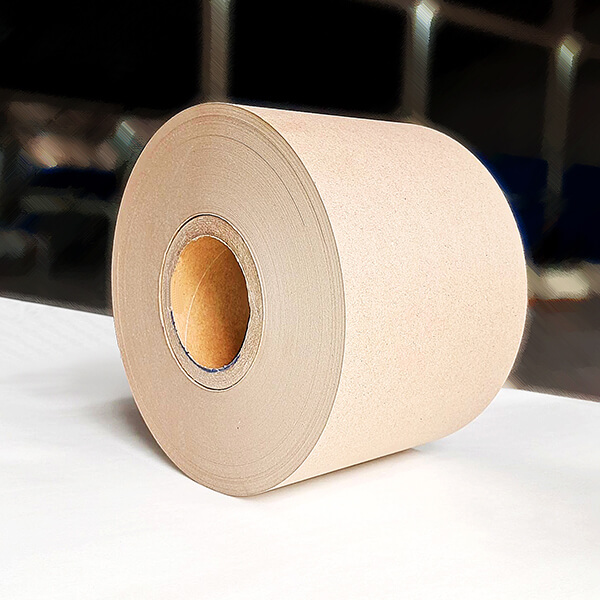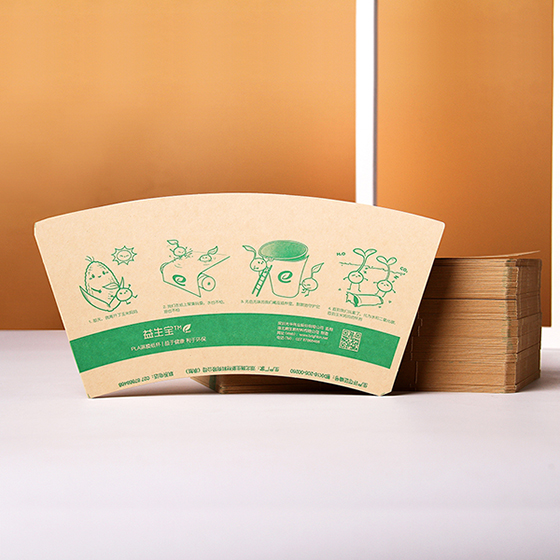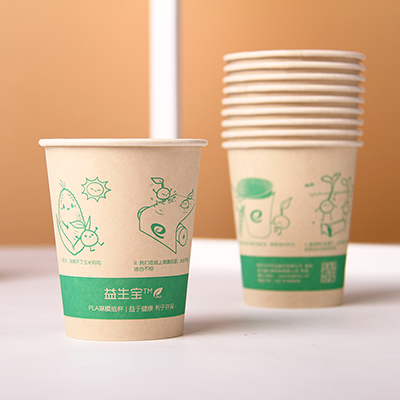What Are PLA Coated Paper Product Preferences?
What are PLA Coated Paper Products and Why are They Preferred?
PLA coated paper products, also known as polylactic acid coated paper products, are gaining popularity due to their environmentally friendly features and wide range of applications. In this section, we will explore the definition of PLA, the composition and characteristics of PLA coated paper, the key benefits of using PLA coatings, and its comparison with traditional PE coated paper products. We will also discuss the popular applications of PLA coated paper products and the growing consumer preferences for sustainable packaging.
Definition and Narrative of PLA
PLA, or polylactic acid, is a biodegradable and compostable polymer derived from renewable resources such as corn starch. Unlike traditional plastics that are made from fossil fuels, PLA is produced from plant-based sources, making it more sustainable and eco-friendly. PLA has gained attention in recent years as a viable alternative to conventional packaging materials due to its biodegradability and compostability features.
Composition and Characteristics of PLA Coated Paper
PLA coated paper consists of a thin layer of PLA applied to paper products, enhancing their durability and water resistance. The PLA coating forms a protective barrier on the paper surface, making it resistant to moisture and other external factors. This allows for the safe packaging of food and beverages without the risk of leakage or contamination.
Moreover, PLA coatings are non-toxic and safe for food contact. They do not contain harmful chemicals such as bisphenol A (BPA) or phthalates, making them a healthier option for food packaging compared to conventional plastic coatings.
Key Benefits of PLA Coated Paper Products
One of the main reasons why PLA coated paper products are preferred is their environmental friendliness. PLA is biodegradable, which means it can break down naturally under specific conditions, reducing the amount of waste that ends up in landfills. Additionally, PLA is compostable, meaning it can be converted into compost through industrial composting facilities. This significantly reduces the amount of waste that accumulates in landfills and helps promote a healthier environment.
Another important benefit of PLA coated paper products is the absence of harmful chemicals. Unlike traditional plastic coatings, PLA coatings do not contain toxic substances like BPA, which can have adverse health effects. This makes PLA coated paper products a safer option for both consumers and the environment.
Comparison with Traditional PE Coated Paper Products
When comparing PLA coated paper products with traditional PE coated paper products, several factors come into play. One of the main differences is the recyclability of the materials. While PLA is compostable and can be easily broken down into natural elements, recycling PE coated paper can be challenging. The recycling process for PE coated paper requires specialized facilities, making it more difficult and less efficient compared to PLA.
Additionally, PE coatings pose environmental hazards due to their non-biodegradable nature. PE coatings do not break down naturally, leading to long-term environmental risks such as pollution and accumulation of non-renewable materials. In contrast, PLA coatings offer a more sustainable alternative, allowing for reduced waste generation and a healthier ecosystem.
Popular Applications of PLA Coated Paper Products
PLA coated paper products have a wide range of applications, particularly in the food packaging industry. They are commonly used for food packaging, such as disposable food containers, takeaway containers, and paper cups. The moisture barrier properties of PLA coatings help keep food fresh and prevent spoilage, making them ideal for packaging perishable goods.
Consumer Preferences and Trends towards Sustainable Products
There is a growing consumer demand for sustainable and eco-friendly packaging solutions. As people become more aware of the environmental impact of traditional packaging materials, they are seeking alternatives that align with their values. PLA coated paper products offer a sustainable choice for consumers who prioritize eco-friendliness and want to reduce their carbon footprint.
To cater to these preferences, many businesses are adopting PLA coated paper products as part of their sustainability initiatives. Case studies and testimonials highlighting the usage of PLA products can serve as valuable resources, showcasing the positive impact of PLA coatings for both businesses and the environment.
In conclusion, PLA coated paper products offer several advantages over traditional PE coated products. They are environmentally friendly, safe for food contact, and have a wide range of practical applications. As consumer preferences shift towards sustainable products, the demand for PLA coated paper products is expected to continue to grow.
How Does PLA Coated Paper Compare to Other Coating Materials?
PLA coated paper is a popular choice for various applications, but how does it compare to other coating materials like polyethylene (PE) and water-based coatings? In this section, we will explore the advantages and disadvantages of PLA coatings and compare them to other materials. We will also analyze consumer preferences and market trends in relation to coated paper products.
Overview of Different Paper Coating Materials
Before diving into the comparison, let’s first understand the different coating materials available for paper products. PLA, PE, and water-based coatings are commonly used in various industries. Each coating has its own unique properties and uses.
- Revestimentos de PLA: PLA (polylactic acid) is derived from renewable resources such as corn starch. It is a biodegradable and compostable polymer that enhances the durability and water resistance of paper products. PLA coatings are non-toxic and safe for food contact.
- PE Coatings: PE (polyethylene) coatings provide strong moisture and water resistance to paper products. They also improve durability and offer thermal protection against extreme temperatures. PE coatings are widely used in the food and beverage industry.
- Revestimentos à base de água: Water-based coatings are composed of natural and synthetic polymers. They are known for their biodegradability and compostability. These coatings are gaining popularity due to their environmental benefits.
Advantages and Disadvantages of PLA Coatings
PLA coatings have several advantages that make them a preferred choice for many consumers. One of the key advantages is their eco-friendliness and biodegradability. PLA is derived from renewable plant-based sources, making it a sustainable alternative to petroleum-based coatings like PE. PLA coatings can be composted, reducing landfill waste and environmental impact. Furthermore, PLA coatings are safe for food contact, as they do not contain harmful chemicals.
However, PLA coatings also have their limitations. One major disadvantage is the limited recycling options for PLA coated paper products. While PLA is biodegradable, it requires specific industrial composting facilities to break down properly. These facilities are not widely available, which poses a challenge for the recycling of PLA coated paper. As a result, PLA coated products often end up in landfills.
Advantages and Disadvantages of PE Coatings
PE coatings offer their own set of advantages and disadvantages. One of the key advantages is their strong moisture and water resistance. PE coated paper products are highly effective at preventing liquid leakage, making them suitable for a wide range of applications. Additionally, PE coatings provide durability and thermal protection, ensuring the quality and integrity of the packaged contents.
However, there are significant environmental concerns associated with PE coatings. PE is a petroleum-based material, contributing to long-term environmental risks. Recycling PE coated paper products is often challenging, as the process involves separating the PE layer from the paper fibers. This can lead to inefficiencies and increased waste. Many countries and regions are phasing out the use of PE coatings due to their environmental impact.
Benefits and Challenges of Water-based Coatings
Water-based coatings offer unique benefits and face specific challenges in comparison to PLA and PE coatings. These coatings are typically composed of natural materials like starch and cellulose, as well as minerals and synthetic polymers. One major advantage of water-based coatings is their full biodegradability and compostability. They break down easily without the need for specialized facilities.
However, water-based coatings do come with some challenges. One challenge is the higher initial cost compared to PE coatings. Water-based coatings often require additional processing steps and use more expensive materials, resulting in a higher price point. Additionally, these coatings may have a potentially shorter shelf life compared to other options.
Comparative Analysis of Performance and Cost-efficiency
When comparing these coating materials, it is important to consider their performance and cost-efficiency. The application and adherence methods of each coating can vary, affecting the overall performance and quality of the coated paper products. Environmental benefits should also be weighed against cost implications, as certain coatings may have a higher upfront cost but offer long-term savings through reduced material usage.
Market Trends and Consumer Preferences for Coated Paper Products
Market trends and consumer preferences play a significant role in shaping the demand for coated paper products. As consumers become more environmentally conscious, there is a growing demand for eco-friendly packaging options. PLA coated paper products, with their biodegradability and compostability, align with these sustainability preferences. Consumer feedback and data-driven insights can provide valuable information on the popularity and acceptance of different coating materials.
Analyzing market trends and consumer preferences can help businesses make informed decisions about the type of coatings to use for their paper products. Data-driven insights, charts, and graphs can illustrate the comparisons between PLA, PE, and water-based coatings, allowing businesses to understand consumer preferences and adapt their product offerings accordingly.
In summary, PLA coated paper offers several advantages, including eco-friendliness and biodegradability. However, limited recycling options are a significant drawback. PE coatings provide strong moisture and water resistance but contribute to long-term environmental risks. Water-based coatings offer full biodegradability but may have higher initial costs and shorter shelf life. Understanding the pros and cons of each coating material is crucial for businesses and consumers in making informed choices for coated paper products.
What Are the Practical Applications and Regulatory Considerations for PLA Coated Paper?
PLA coated paper products have gained popularity due to their eco-friendly nature and biodegradability. In this section, we will explore the practical applications of PLA coated paper, customization options, important certifications and compliance, regulatory considerations, and the impact of regulations on the market and consumer behavior. We will also discuss future trends in the usage of PLA coated paper.
Common practical applications of PLA coated paper
PLA coated paper finds wide-ranging applications, especially in the food packaging industry. It is commonly used in paper cups, cup lids, and food containers due to its eco-friendly properties and safety standards. PLA coated paper provides a moisture barrier that keeps food fresh and prevents spoilage. It is suitable for both hot and cold food and beverage items.
In addition to food packaging, PLA coated paper is also used for other purposes such as disposable cutlery, trays, and packaging materials. Its versatility allows it to be formed into different shapes like cans, boxes, and cups, making it suitable for various applications.
Customization options for PLA coated paper products
One of the key advantages of PLA coated paper products is the ability to customize them according to branding requirements. Businesses can opt for custom print designs on the PLA coatings to enhance their brand visibility. This customization option allows businesses to create a unique and eye-catching product that aligns with their brand image and messaging.
Several businesses across different industries have already embraced the use of PLA coated paper products. For example, coffee chains and cafes often use PLA coated paper cups and lids to provide their customers with eco-friendly packaging options. This not only demonstrates their commitment to sustainable practices but also attracts environmentally-conscious consumers.
Important certifications and compliance
When considering PLA coated paper products, it is important to ensure that the manufacturers have the necessary certifications and compliance. Some of the key certifications to look out for include BPI (Biodegradable Products Institute), Din Certco, and FSSC 22000 certifications.
These certifications guarantee that the PLA coated paper products meet industry standards for biodegradability, compostability, and food safety. They are crucial for both manufacturers and consumers to ensure that the products are safe, eco-friendly, and meet the required quality standards.
Regulatory considerations for PLA coated paper
Regulations surrounding the usage of PLA coated paper vary by region or country. For instance, in the European Union, there are regulations under the Packaging and Packaging Waste Directive. These regulations promote the use of recyclable and compostable materials, including PLA coatings, to reduce environmental impact.
Other countries, such as the United States and Japan, also have their own regulations and guidelines regarding the usage of PLA coated paper. It is important for manufacturers and businesses to stay updated on these regulations to ensure compliance and avoid any legal issues.
Impact of regulations on market demand and consumer behavior
Regulatory requirements and considerations play a significant role in shaping market demand and consumer behavior when it comes to PLA coated paper products. As regulations focus on reducing single-use plastics and promoting sustainable alternatives, the demand for eco-friendly packaging solutions like PLA coated paper tends to increase.
For example, the phasing-out of traditional PE (polyethylene) coated paper cups in various regions due to environmental concerns has paved the way for the adoption of PLA coated paper cups. Consumers are becoming more aware of the environmental impact of their choices and are actively seeking out sustainable options.
Businesses that proactively embrace regulations and offer PLA coated paper products can capitalize on this growing demand and cater to environmentally-conscious consumers. Case studies showcasing the successful implementation of regulatory compliance can help inspire other businesses to follow suit.
Future trends in the usage of PLA coated paper
The usage of PLA coated paper is expected to continue its upward trajectory in the future. As consumers become more environmentally-conscious and regulatory requirements become stricter, there will be a shift in consumer preferences towards sustainable packaging solutions like PLA coated paper.
Innovations and technological advancements in PLA coatings are also expected to drive the future trends in the usage of PLA coated paper. Researchers and manufacturers are continuously working towards developing more sustainable and efficient PLA coatings that meet regulatory standards while still providing excellent product performance.
Overall, the future of PLA coated paper looks promising. With the right certifications, compliance, and a focus on meeting consumer demands, businesses can thrive in the market while contributing to a more sustainable future.
Comparison of Coating Materials
| Coating Material | Biodegradável | Compostável | Recycling Options | Preço |
|---|---|---|---|---|
| PLA | Sim | Sim | Limitada | Moderado |
| PE | Não | Não | Challenging | Baixa |
| À base de água | Sim | Sim | Bom | Alta |
This table compares the main coating materials used in the packaging industry. It highlights the biodegradability, compostability, recycling options, and price of each material.
Regulatory Considerations
| Região | Regulations |
|---|---|
| European Union | Packaging and Packaging Waste Directive |
| Estados Unidos | Various regulations at state and federal levels |
| Japão | Guidelines for the use of PLA coated paper and packaging |
This table outlines the regulatory considerations for PLA coated paper products in different regions. It identifies the main regulations and guidelines that businesses need to be aware of when using PLA coatings.
FAQs about PLA Coated Paper Product Preferences
What are PLA coated paper products, and why are they preferred?
To define PLA coated paper products, they consist of a thin layer of polylactic acid (PLA) applied to paper, enhancing durability and water resistance, and are preferred due to their eco-friendly and sustainable nature.
How is PLA derived and why is it considered environmentally friendly?
To describe how PLA is derived, it is a biodegradable and compostable polymer made from renewable resources like corn starch, as opposed to traditional plastics that are fossil fuel-based, making it sustainable and eco-friendly.
What are the key benefits of using PLA coated paper products?
To list the key benefits, PLA coated paper products are environmentally friendly, biodegradable, compostable, and safe for food contact, free from harmful chemicals like BPA and phthalates.
Como o papel revestido de PLA se compara ao papel revestido de PE tradicional?
To compare PLA to PE coated paper, PLA is biodegradable and compostable, whereas PE is challenging to recycle and non-biodegradable, posing long-term environmental risks.
What are some popular applications of PLA coated paper products?
To state popular applications, PLA coated paper products are widely used in the food packaging industry for items like disposable food containers, takeaway containers, and paper cups, offering moisture barrier properties to keep food fresh.
PLA coated paper shines as an eco-friendly, durable solution for packaging. It’s biodegradable, compostable, and non-toxic. Compared to PE and water-based coatings, PLA stands out for its environmental benefits. While regulations can challenge manufacturers, compliance pushes innovation and market shifts. As a sustainable and effective choice, PLA coated paper aligns well with future trends. Demand for green products is growing, and PLA products meet this need efficiently. Embrace PLA coatings for a better, greener future.





